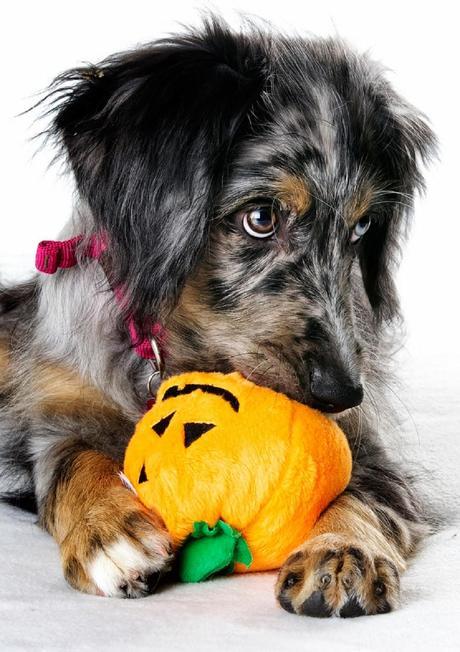
Photo by DirtBikeDBA (Mike) Foter CC BY-NC-ND
By Stacey McIntyre-GonzalezThe neighborhood is getting spookier as Halloween crawls closer and closer. Horrific decorations adorn festive homes while the search for the best costume continues. Little do pet parents know the candy and décor of Halloween could end up being dangerous for household pets.
Veterinary Pet Insurance Co.(VPI) released its Top Halloween PetDangers and Safety Tips on Oct. 15 to help educate pet parents about how this scary holiday could negatively affect their pet. VPIreportsthat in the United States alone consumers spend $7 billion on Halloween candy, decorations andcostumes. Unfortunately having all of these seemingly benign holiday objects in the home means that consumers could be exposing their pets to toxic or hazardous things.
READ MORE!
“Halloween presents multiple dangers for our pets,” Dr. Carol McConnell, DVM, MBA, Vice President and Chief Veterinary Medical Officer for VPI states in thereport. “An increase of candy in the home creates new opportunities for pets to eat harmful foods and the continual noise from holiday festivities can create a lot of stress.”
VPI reports calls toPet Poison Helplineincrease 12% during the Halloween season. October is the helpline’s busiest season and VPI poured over more than 500, 000 insured pets in its database to determine the average cost of treatment for toxins ingested during the spooky season.
Ingestion of costume parts average treatment cost is $1,627 meaning that a good costume can end up costing way more than anticipated. Two of the most toxic human foods for dogs also made the list: raisins and chocolate. Raisin toxicity average treatment costs $565 while chocolate toxicity comes in at $356. Also included on the VPI list are “Chewing Gum and Candy (Containing Xylitol) Toxicity” costing $330 and upset stomach and diarrhea treatment averaging $203.

Photo provided by VPI press release
This does not include the many pets not under VPI’s insurance that are rushed to the vet during the Halloween season for related ingestion issues. Many pet owners dress their pets up incostumefor Halloween as well- in the U.S. alone pet parents spend more than $370 million annually. Dressing up a pet also raises more concerns- not just for ingested costume parts but for the costumes themselves.“Poorly fitted costumes can constrict pets and lead to panic or injury. Also take note of costumes with ribbon, strings or dangling objects that can lead to choking or strangulation,” the VPIreleasestates. “If a pet begins to itch excessively, be sure to remove the costume as allergies from fabric, detergent or fabric softeners can cause a rash.”
The risk of a pet running away also increases during the Halloween season. The door opening and closing to trick-or-treaters offers many opportunities for a pet to slip out unnoticed. Noise, commotion and frequent guests can ignite excitement and stress in the animal. VPIreportsthat according to their research Halloween is the second most common holiday for pets to become separated from their family.
“I encourage all pet lovers to keep a close eye on their pets during Halloween and to provide them with a quiet area to relax and feel safe,” said Dr. McConnell.
Also recommended is making sure the pets’ tags and identification is on the pet and is current. Follow these tips to keep pets safe this Halloween season and enjoy the scares without all the stress.
VisitPaws For Reactionfor morepet news.Subscribetoday forExamineralerts about important pet information.
